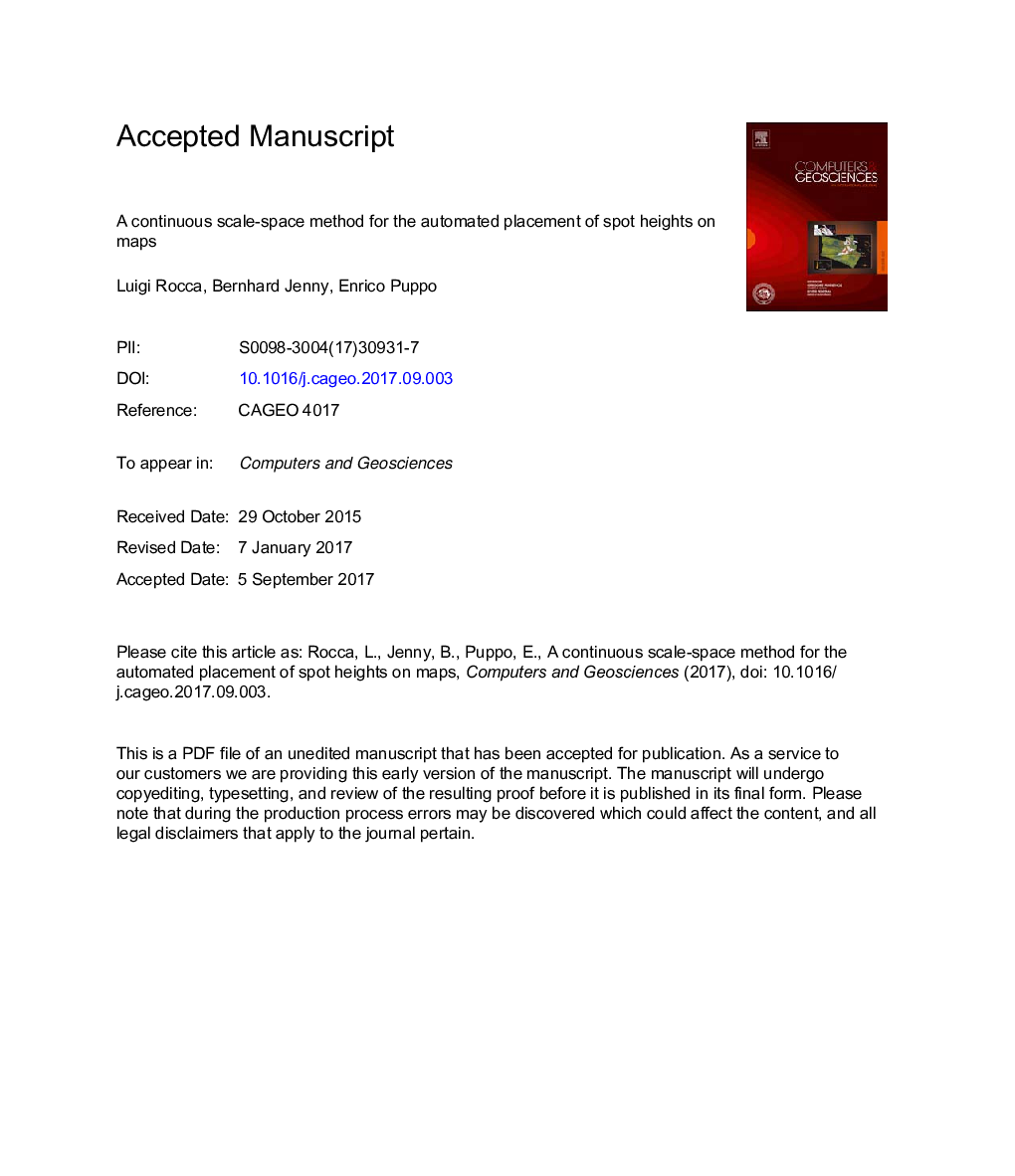| Article ID | Journal | Published Year | Pages | File Type |
|---|---|---|---|---|
| 4965359 | Computers & Geosciences | 2017 | 19 Pages |
Abstract
Spot heights and soundings explicitly indicate terrain elevation on cartographic maps. Cartographers have developed design principles for the manual selection, placement, labeling, and generalization of spot height locations, but these processes are work-intensive and expensive. Finding an algorithmic criterion that matches the cartographers' judgment in ranking the significance of features on a terrain is a difficult endeavor. This article proposes a method for the automated selection of spot heights locations representing natural features such as peaks, saddles and depressions. A lifespan of critical points in a continuous scale-space model is employed as the main measure of the importance of features, and an algorithm and a data structure for its computation are described. We also introduce a method for the comparison of algorithmically computed spot height locations with manually produced reference compilations. The new method is compared with two known techniques from the literature. Results show spot height locations that are closer to reference spot heights produced manually by swisstopo cartographers, compared to previous techniques. The introduced method can be applied to elevation models for the creation of topographic and bathymetric maps. It also ranks the importance of extracted spot height locations, which allows for a variation in the size of symbols and labels according to the significance of represented features. The importance ranking could also be useful for adjusting spot height density of zoomable maps in real time.
Related Topics
Physical Sciences and Engineering
Computer Science
Computer Science Applications
Authors
Luigi Rocca, Bernhard Jenny, Enrico Puppo,
